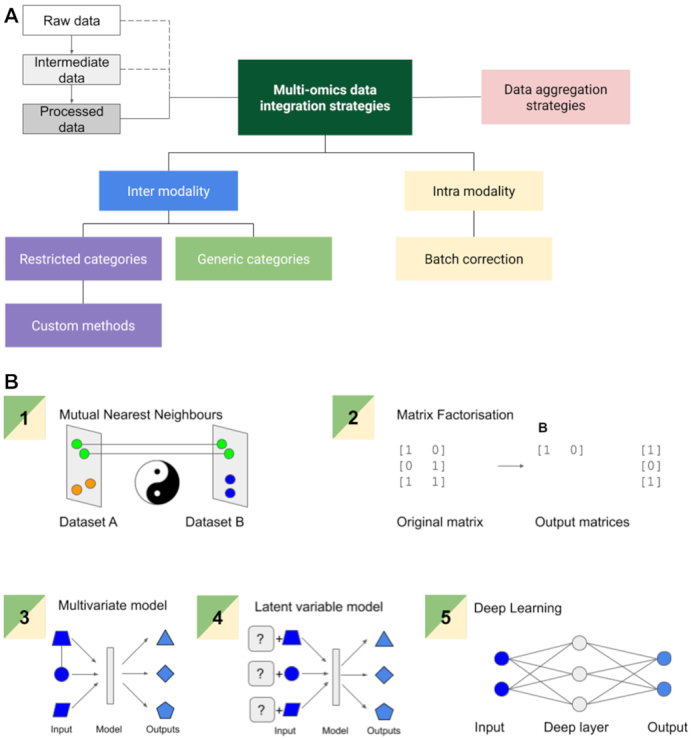Figure 3:

Our proposed functional taxonomy of data integration methods. (A) Inter-modality and intra-modality harmonization methods exist. Data aggregation tools are separate from these methods, which are not data integrators in the context of our review. With inter-modality restricted methods, custom strategies are common. (B) For inter-modality generic methods, 5 approaches are common. Mutual nearest neighbours exploits common points between single-cell datasets as references, matrix factorization operates on abundance measures to categorize data and is agnostic to data type, multivariate models attempt to account for dependent and independent variable contribution to the output, latent variable models attempt to model an unobserved factor’s contribution to the output, and deep learning optimizes a series of regressions to yield a categorical variable or generate an output. Intra-modality harmonization methods share these strategies but apply them specifically to reduce unwanted technical variation. We note that current methods use data in a processed state, and for a better harmonization raw or intermediate data (as shown by the dotted lines in panel A) can be used.
